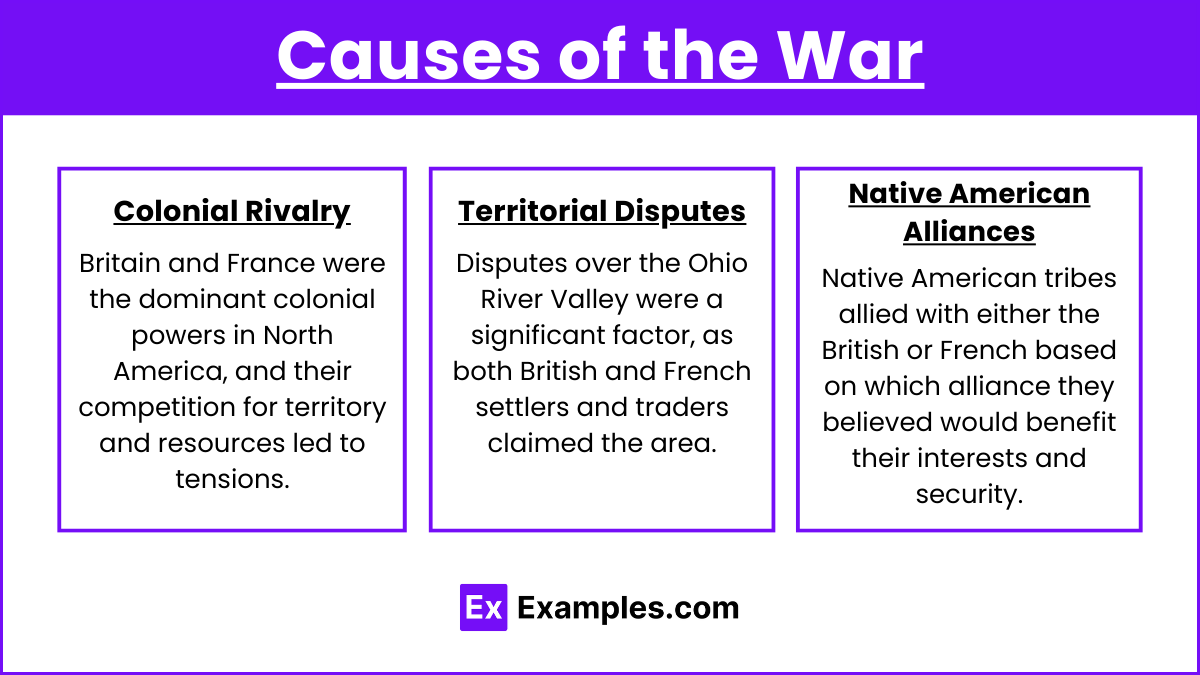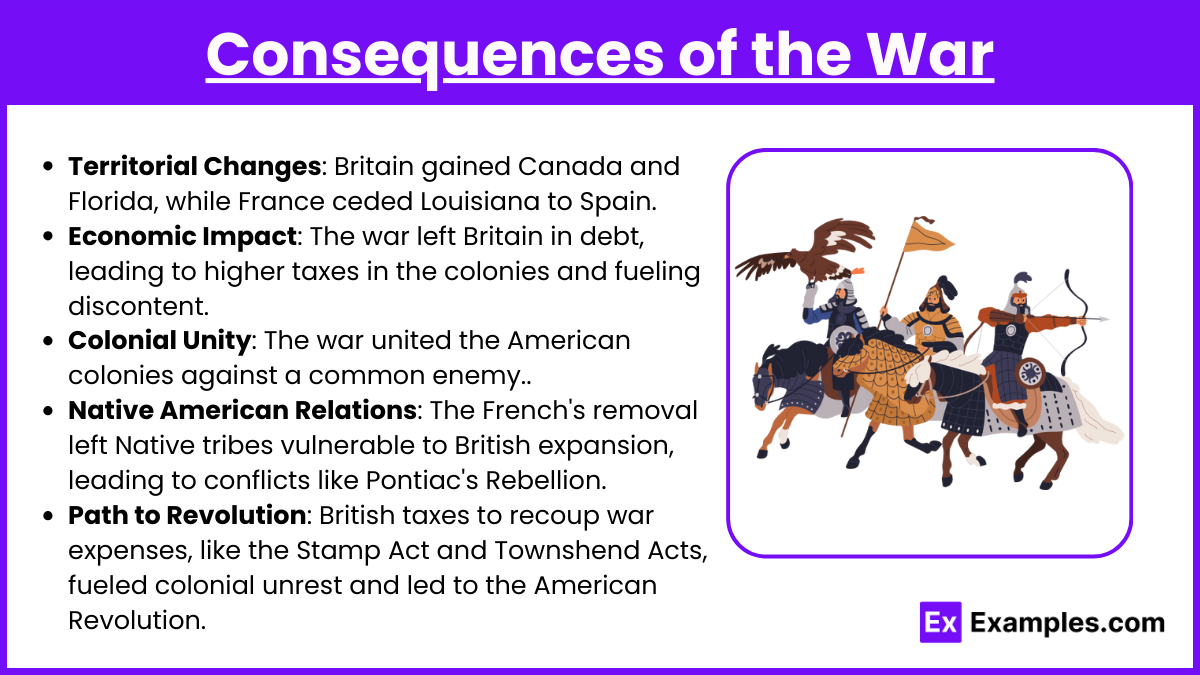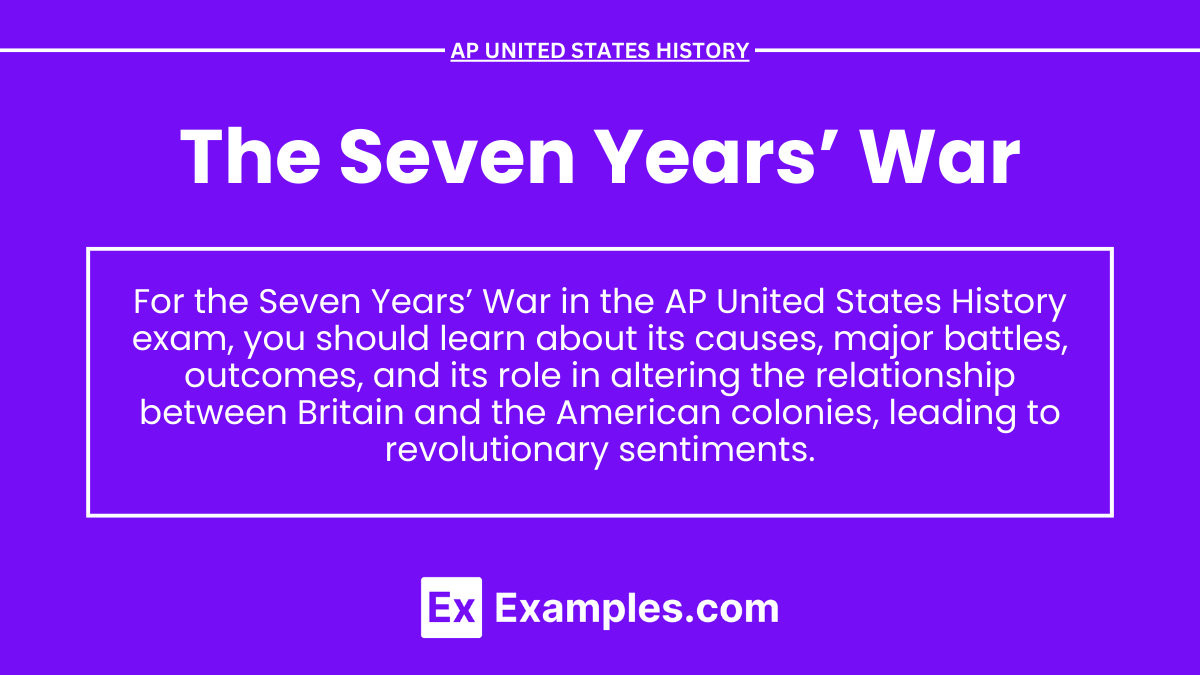In AP United States History, the Seven Years’ War, often referred to in the American context as the French and Indian War (1754–1763), represents a critical turning point in colonial history. This global conflict between major European powers, primarily Britain and France, played out in the North American theater as a fierce struggle for territorial dominance. The war’s conclusion with the Treaty of Paris in 1763 dramatically reshaped the geopolitical landscape, leading to significant territorial gains for Britain, severe financial strain necessitating increased colonial taxation, and a series of events that ultimately paved the way for the American Revolution.
Learning Objectives
In studying the Seven Years’ War in AP United States History, you will be expected to understand the causes and major events of the conflict. The war’s impact on colonial relations and Native American alliances will be analyzed. The significant territorial changes and their effects on British colonial policies will be examined. Additionally, the economic consequences leading to increased taxation and colonial discontent, which set the stage for the American Revolution, will be comprehended.
Causes of the War

Colonial Rivalry: Britain and France were the dominant colonial powers in North America, and their competition for territory and resources led to tensions.
Territorial Disputes: Disputes over the Ohio River Valley were a significant factor, as both British and French settlers and traders claimed the area.
Native American Alliances: Native American tribes allied with either the British or French based on which alliance they believed would benefit their interests and security.
Key Events

1754 – Fort Necessity: The war’s first significant conflict occurred when a young George Washington was forced to surrender to the French at Fort Necessity.
1755 – Braddock’s Defeat: British General Edward Braddock’s expedition to capture Fort Duquesne ended in a devastating defeat by French and Native American forces.
1757 – Battle of Fort William Henry: French forces, led by Montcalm, captured the British-held Fort William Henry, leading to a massacre of British soldiers by Native American allies of the French.
1759 – Battle of Quebec: A decisive battle where British forces, led by General James Wolfe, defeated the French under the Marquis de Montcalm on the Plains of Abraham, leading to British control of Quebec.
1763 – Treaty of Paris: The war ended with the Treaty of Paris, where France ceded much of its North American territories to Britain, significantly reshaping the map of North America.
Consequences of the War

Territorial Changes: Britain gained control of Canada and Florida, while France ceded Louisiana to Spain as compensation for Spain’s loss of Florida.
Economic Impact: The war left Britain with a massive debt, leading to increased taxation in the American colonies, which fueled colonial discontent.
Colonial Unity: The war fostered a sense of unity among the American colonies, as they worked together against a common enemy.
Native American Relations: The removal of the French threat left Native American tribes vulnerable to British expansion and led to further conflicts such as Pontiac’s Rebellion (1763).
Path to Revolution: The British attempts to recoup war expenses through taxation (e.g., the Stamp Act, Townshend Acts) directly contributed to colonial unrest and the eventual American Revolution.
Examples
Fort Duquesne: A strategic French fort at the convergence of the Allegheny and Monongahela rivers, it was a focal point of British and French conflict.
George Washington’s Role: Washington’s early military career was significantly shaped by his involvement in the French and Indian War, where he gained valuable experience.
Albany Plan of Union (1754): Proposed by Benjamin Franklin, this plan aimed to unify the colonies for defense against the French but was ultimately rejected by colonial assemblies.
William Pitt’s Leadership: As British Secretary of State, Pitt provided the necessary resources and strategic direction that turned the tide in favor of the British.
Treaty of Paris (1763): This treaty marked the end of French colonial power in North America and significantly expanded British territorial claims.
Multiple-Choice Questions (MCQs)
Which event marked the beginning of the French and Indian War?
- A. The Battle of Quebec
- B. The Treaty of Paris
- C. The skirmish at Fort Necessity
- D. The capture of Fort William Henry
Explanation: The conflict began with the confrontation at Fort Necessity in 1754, where George Washington’s forces were defeated by the French.
Which treaty ended the Seven Years’ War and significantly altered the map of North America?
- A. Treaty of Utrecht
- B. Treaty of Paris (1763)
- C. Treaty of Ghent
- D. Treaty of Versailles
Explanation: The Treaty of Paris in 1763 ended the war and resulted in France ceding much of its North American territory to Britain.
What was one major consequence of the Seven Years’ War for the British colonies in America?
- A. Decreased taxation
- B. Increased French influence
- C. Economic boom
- D. Increased taxation and colonial discontent
Explanation: The British government, facing massive war debts, imposed new taxes on the American colonies, leading to widespread discontent and contributing to the revolutionary movement.


